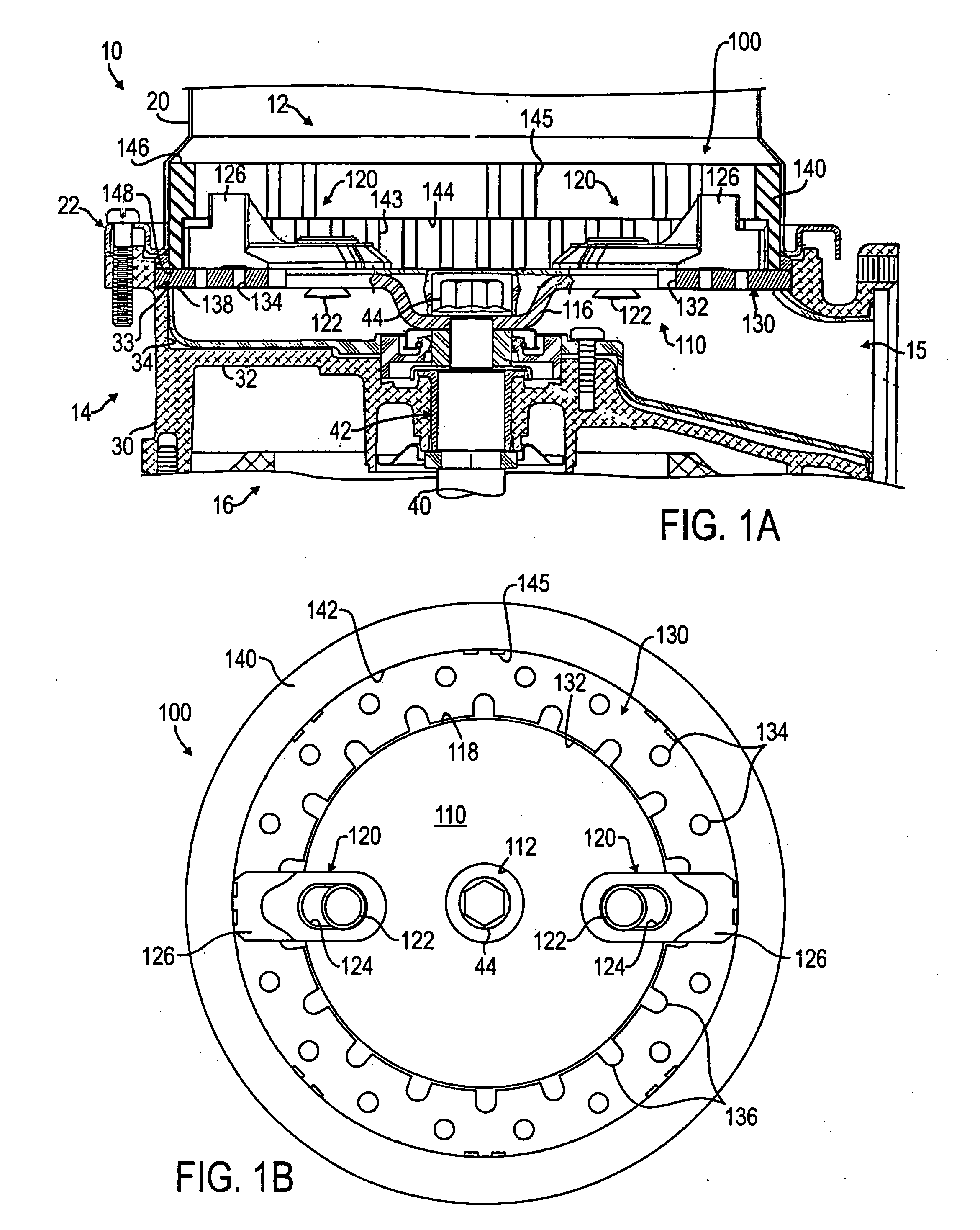Food waste reduction mechanism for disposer
a technology of food waste and reduction mechanism, which is applied in the direction of water installations, solid separation, construction, etc., can solve the problems of stringy food waste that cannot be adequately reduced in size, the design of the reduction mechanism in the disposer may encounter some difficulty in sufficiently reducing fibrous, stringy, elastic food waste, etc., and achieves the effect of reducing food waste, reducing food waste, and reducing food was
- Summary
- Abstract
- Description
- Claims
- Application Information
AI Technical Summary
Benefits of technology
Problems solved by technology
Method used
Image
Examples
Embodiment Construction
[0030] In the interest of clarity, not all features of actual implementations of a reduction mechanism for a food waste disposer are described in the disclosure that follows. It will of course be appreciated that in the development of any such actual implementation, as in any such project, numerous engineering and design decisions must be made to achieve the developers' specific goals, e.g., compliance with mechanical and business related constraints, which will vary from one implementation to another. While attention must necessarily be paid to proper engineering and design practices for the environment in question, it should be appreciated that the development of a reduction mechanism would nevertheless be a routine undertaking for those of skill in the art given the details provided by this disclosure.
[0031] Referring to FIGS. 1A-1B, an embodiment of a reduction mechanism 100 is illustrated. FIG. 1A shows a portion of a food waste disposer 10 in side cross-section having the red...
PUM
 Login to View More
Login to View More Abstract
Description
Claims
Application Information
 Login to View More
Login to View More - R&D
- Intellectual Property
- Life Sciences
- Materials
- Tech Scout
- Unparalleled Data Quality
- Higher Quality Content
- 60% Fewer Hallucinations
Browse by: Latest US Patents, China's latest patents, Technical Efficacy Thesaurus, Application Domain, Technology Topic, Popular Technical Reports.
© 2025 PatSnap. All rights reserved.Legal|Privacy policy|Modern Slavery Act Transparency Statement|Sitemap|About US| Contact US: help@patsnap.com



